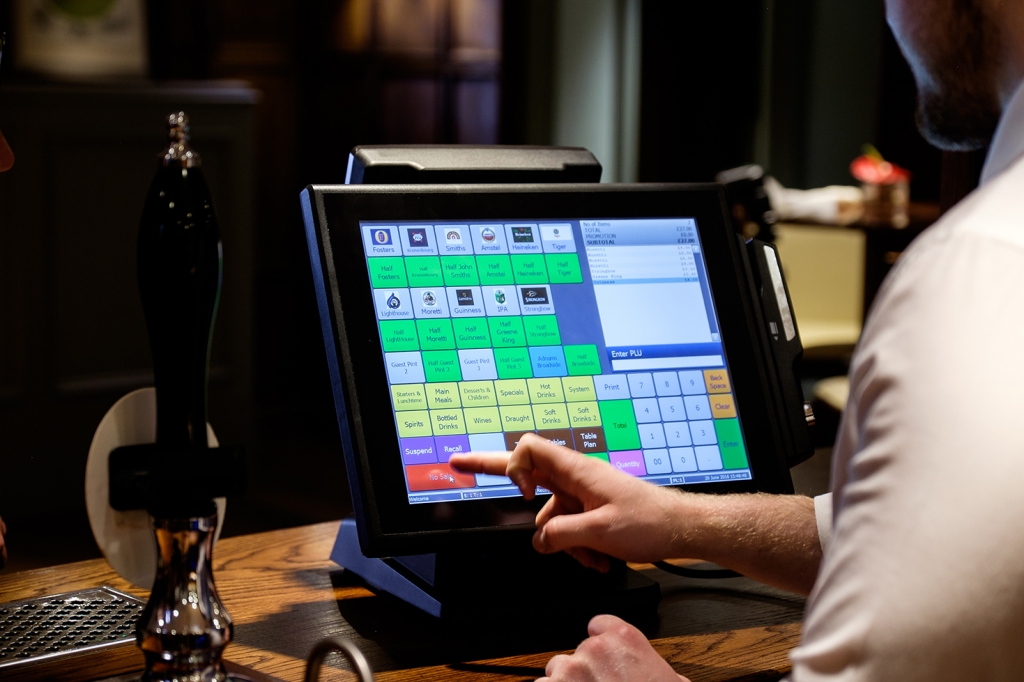
The humble point of sale (POS) system is now an essential restaurant tool in a marketplace driven by technology.
Put simply, if your restaurant doesn’t have a modern POS system, it’ll struggle to retain the best staff and keep diners happy – the two things by which every restauranteur lives or dies.
However, with technological change and innovation comes an awful lot of choice, and nowhere is this more prevalent than in the POS market. There are literally hundreds of systems to choose from, so how on earth do you cut through the strap lines, feature lists and demos to find the one that best suits your restaurant?
We think there are seven key things to consider when choosing a POS system for a restaurant, and have listed them below. Keep this list by your side as you research the market and you’ll quickly narrow down a solid shortlist of candidates.
1. Mobile compatibility
Remember the days when all point of sale terminals were those great, big, clunky machines that took up far too much space on your bar?
Well, some are still rather large – granted, but their mobile counterparts are fast becoming a far more elegant way to process sales and take payments. Make sure the POS system you choose is fully mobile compatible with both smartphones and tablets.
2. Data (big data)
Here we go again – another reference to ‘big data’…
When boiled down, ‘big data’ simply refers to the fabulous ways businesses can profile their customers in the digital age, and the right POS system will enable you to do just that with your diners. When shopping around, check that the systems you’re considering offer detailed data capture and the means to extract said data for marketing purposes.
3. Overarching benefits
There’s little point investing significant funds, time and energy into a POS system if it doesn’t offer a measurable return on investment (ROI).
When you speak to the POS system provider, ask them the all important ROI question: what overarching benefits will their system deliver? What cost savings, and diner insight will it provide to help you run a more profitable business?
4. Compatibility with existing processes
There’s no two ways about it – the POS system you choose will have to slot into your existing processes.
For example, if the way the system forces you to perform stock-takes requires a huge overhaul of the current process, you’ll need to weigh up if the upheaval and negative impact on staff satisfaction is worth it.
5. PCI compliance
An easy one, this. The POS system you purchase must be PCI compliant in order to keep you out of trouble when processing and storing customer credit card details.
6. Hospitality or retail?
Not every POS system is geared towards hospitality. Some will be strictly retail-focussed, while others may tread water in both camps.
Make sure the hospitality features of the POS systems you’re considering fall in line with industry standards and the requirements of a modern restaurant operation. A system that works perfectly in a retail store may not slot seamlessly into a bar and restaurant business.
7. Type of installation
Some POS systems require onsite installation, several days of training and ‘go-live’ assistance, while others are of the self-install variety.
The option you go for depends largely on your desire to implement a system without significant input from the vendor and the number of staff who will need to learn how to use the software. A demo (if available) of the system is a great way to see how easily it could be picked up by the team.
If you opt for mobile POS, the likelihood is self-install will be the only route forward, therefore it’s vital you check out how much supporting material is made available (i.e. PDF manuals, video guides and online assistance).
Wrapping up
Notice we missed a couple of things above? Namely ‘ease-of-use’ and ‘price’. And, before we sign off, it’s worth explaining why.
Firstly, the term ‘ease-of-use’ in tech is gradually becoming as old fashioned as the systems that were sold on its promise. You’ve got to look pretty hard to find a new POS system that is hard to use; they all rely on touchscreen technology with which most of us are familiar, and most take their user interface cues from platforms we interact with every day, such as Apple’s iOS and Google’s Android operating systems.
So, what about price? Well, again, software pricing has matured considerably in recent years, and there are now two distinct options:
- Upfront purchase, and on-going maintenance
- No upfront purchase, and on-going rental
The latter is gradually becoming far more common, and follows the provision of software in general, which is almost always offered on some form of rental, pay-as-you-go basis. The model that works best for your restaurant very much depends on your budget and the size and complexity of the system you require.
Happy POS shopping! The right system is out there, and with our tips above, you’ll find it in no time at all.


Leave A Comment